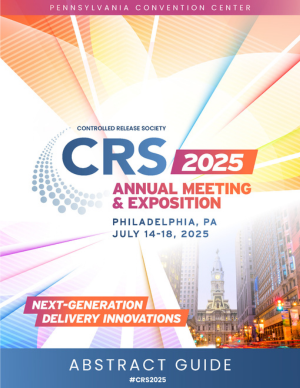Nanomedicine and Nanoscale Delivery (Focus Group - NND)
(309) A Two-component Two-step Transformable Nanoplatform against Cancers Based on Bioorthogonal Chemistry
Introduction: To achieve higher drug targeting and efficacy against cancers, a two-component two-step (TCTS) delivery approach is proposed (Fig 1A). In the first step, a peptide-based nanoparticle was administered, and transformed into nanofibers[1] on binding to the cancer cells. In the second step, when all the nanoparticles in the normal organs were eliminated, the tetrazine-prodrug was administered. Owing to the highly efficient bioorthogonal click reaction, the tetrazine-drug was selectively captured by the nanofibers carrying TCO (trans-cyclooctene) [2, 3] at tumor sites to achieve tumor targeting.
Learning Objectives:
- Synthesize, prepare, and characterize the transformable nanoparticles and the tetrazine-CBZ prodrugs
- Demonstrate the nanofibrillar transformation and bioorthogonal click chemistry in vitro and in vivo
- Evaluate the anticancer efficacy of the two-component two-step drug delivery system
Ruiwu Liu – Research Professor, Biochemistry and Molecular Medicines, University of California, Davis; Phonpilas Thongpon – Visiting Graduate Student, Biochemistry and Molecular Medicines, University of California, Davis; Anchaleena James – Undergraduate Student, University of California, Davis; Karthik Nandakumar – Undergraduate Student, University of California, Davis; Jackson Conger – Undergraduate Student, University of California, Davis; Darya Einollahi – Undergraduate Student, University of California, Davis; Chang Liu – Undergraduate Student, University of California, Davis

Ruiqi Huang, M.S.
Doctoral Graduate Student
University of California, Davis
Sacramento, California, United States

